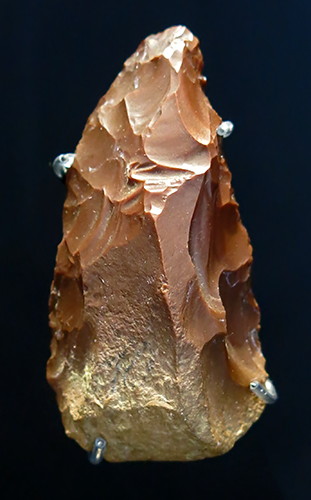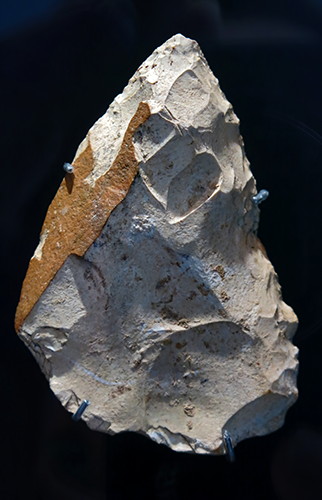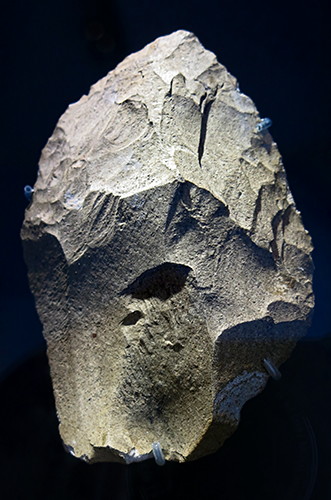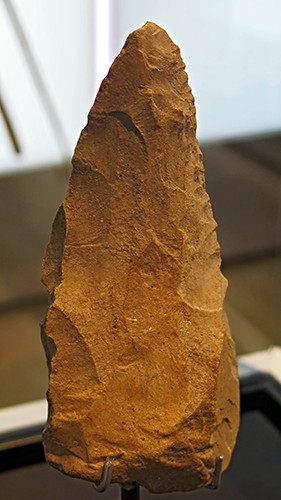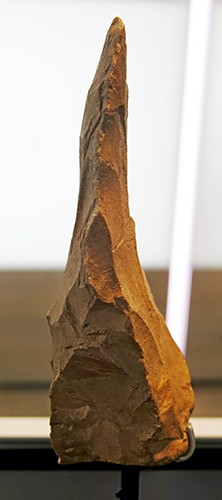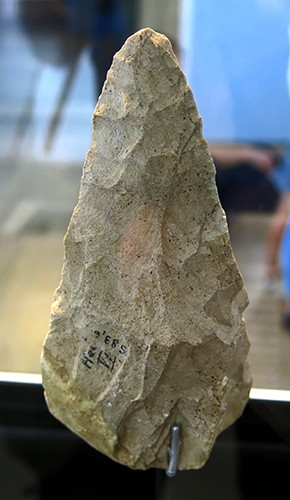Back to Don's Maps
 Back to Archaeological Sites
Back to Archaeological Sites  Back to the review of hominins
Back to the review of hominins
Heidenschmiede

Heidenschmiede under the Schloss Hellenstein, view of the excavations in 1930.
Photo: © RP Stuttgart, Landesamt für Denkmalpflege Baden-Württemberg
Rephotography: Don Hitchcock 2015 Source and text: Landesmuseum Württemberg, Stuttgart
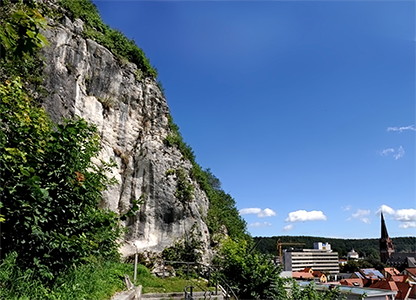
During the excavation of the rock shelter, numerous remains of the animals the Neanderthals hunted were found.
Mammoth, wooly rhinoceros, horse, reindeer, wolf, fox, hare and marmot were found. In addition, there were also the Bean Goose ( Anser fabalis ), Herring Gull, Mallard, Ruff, Willow Ptarmigan , Jackdaw and owl. The cold animal species among them show that this was a tundra landscape, with subarctic forest in protected areas close by.
Photo: © Holger Uwe Schmitt, via Panoramio
Text: Landesmuseum Württemberg, Stuttgart
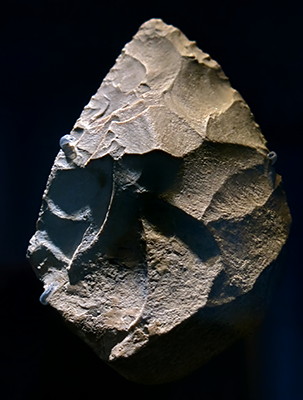
Small handaxe, circa 70 000 BP - 50 000 BP.
Jurahornstein, Jurassic chert.
Heidenschmiede, Heidenheim, Kreis Heidenheim.
Photo: Don Hitchcock 2015
Source and text: Landesmuseum Württemberg, Stuttgart
Along the southwestern bulwark of the castle in Heidenheim, the rock face 35 metres above the valley floor forms a small overhang just large enough to create an 8 square metre abri, or rock shelter. Together with the open space in front of it, the cave has a usable area of some 30 square metres.
In spite of its small size, this so-called Heidenschmiede, or heathen's forge, rock shelter was a place our ancestors went to time and again. This may have been because of the splendid view across the wide, open valley of the Brenz River, which provided an excellent hunting ground.
Heidenheim is about 100 km to the east of Stuttgart.
Text above: Landesmuseum Württemberg, Stuttgart
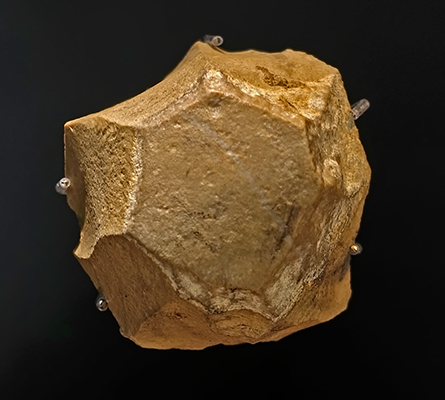
Core with negatives of blades, Jurahornstein, Jurassic chert.
Heidenschmeide, Heidenheim, Kreis Heidenheim.
Photo: Don Hitchcock 2018
Source and text: Landesmuseum Württemberg, Stuttgart
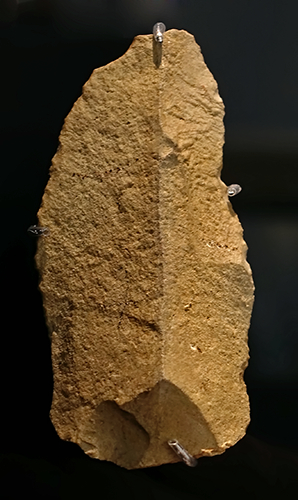
Blade, Kieselkalk, chert, Heidenschmiede, Heidenheim, Kreis Heidenheim, circa 50 000 BP.
Photo: Don Hitchcock 2018
Source and text: Landesmuseum Württemberg, Stuttgart
Legacies of the Neanderthals
These handaxes and flake tools are made to a large extent from chert coming from deposits in the area near Stuttgart.
Various stone tools from Heidenschmiede, Heidenheim, district Heidenheim, circa 120 000 BP - 50 000 BP.
(left) Point, radiolarite
(centre) Hand axe, Jurahornstein, Jurassic chert.
(right) Faustkeilblatt, flat or leaf hand axe, chert.
Circa 120 000 BP - 50 000 BP
Photo: Don Hitchcock 2015
Source and text: Landesmuseum Württemberg, Stuttgart
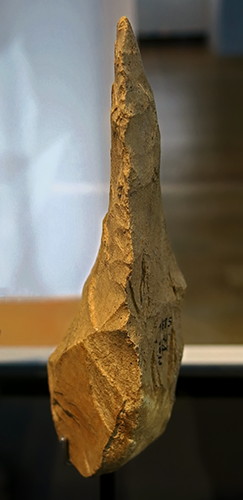
Neanderthals were master stone knappers. They possessed a sense of aesthetics and an intuition for the right material, as may be seen from their handaxes.
In Heidenschmiede there were numerous stone tools made from fresh water quartzite. This is a material very similar to flint, and outcrops only a few kilometres from the site.
Four views of a handaxe, freshwater quartzite, Heidenschmiede, Heidenheim, district Heidenheim.
Circa 70 000 BP - 50 000 BP
Length 148 mm, width 71 mm.
Photo: Don Hitchcock 2015
Source and text: Landesmuseum Württemberg, Stuttgart
References
- Peters E., 1931: Die Heidenschmiede in Heidenheim, Fundberichte Baden-Württemberg, NF VI, S. 1-36.
